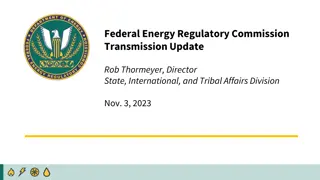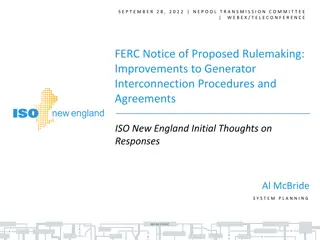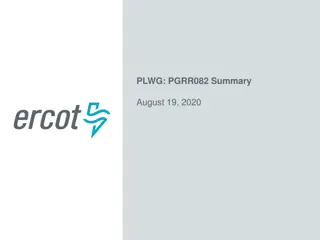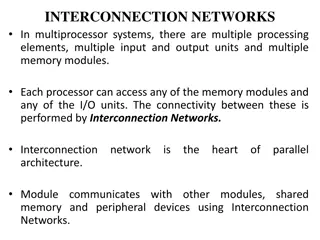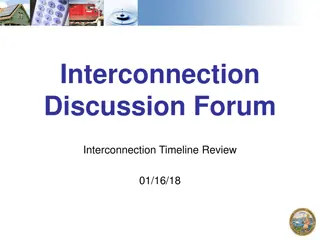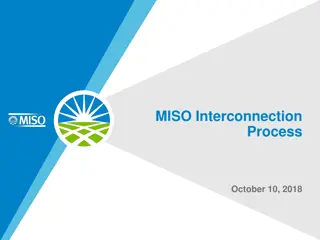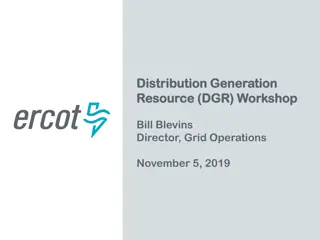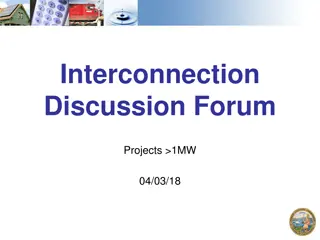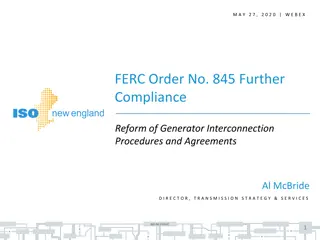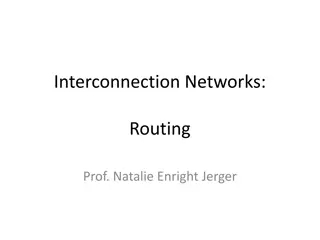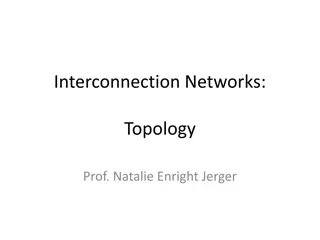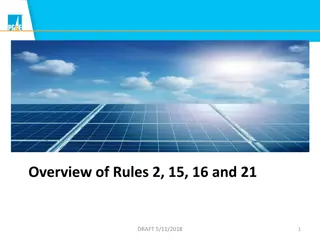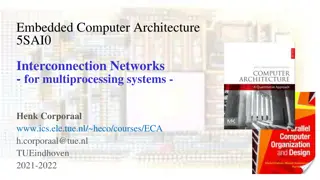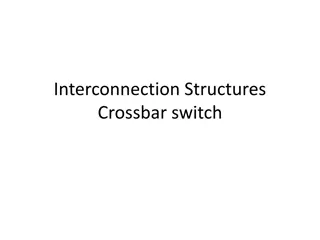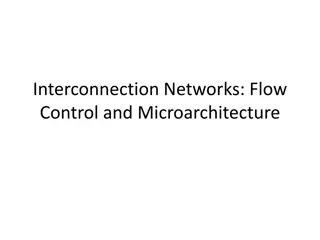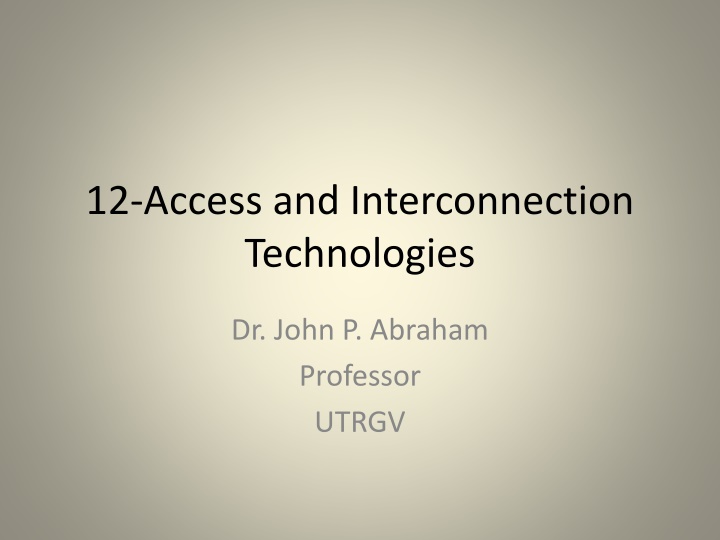
Access and Interconnection Technologies
Explore the world of internet access technologies including asymmetric patterns, narrowband vs broadband technologies, the local loop and ISDN, DSL variations, adaptation characteristics, and data rates of ADSL. Learn about different data transfer speeds, modulation techniques, and key features of various access technologies.
Download Presentation

Please find below an Image/Link to download the presentation.
The content on the website is provided AS IS for your information and personal use only. It may not be sold, licensed, or shared on other websites without obtaining consent from the author. If you encounter any issues during the download, it is possible that the publisher has removed the file from their server.
You are allowed to download the files provided on this website for personal or commercial use, subject to the condition that they are used lawfully. All files are the property of their respective owners.
The content on the website is provided AS IS for your information and personal use only. It may not be sold, licensed, or shared on other websites without obtaining consent from the author.
E N D
Presentation Transcript
12-Access and Interconnection Technologies Dr. John P. Abraham Professor UTRGV
Internet Access Technology Asymmetric pattern A typical user - receives more data than sends. A company hosting a web server sends more data than receives. Downstream receiving Upstream sending
Narrowband and Broadband Access Technologies Narrow <= 128Kbps ISDN or POTS giving 64Kbps Dialup telephone lines Leased circuit using modems Fractional t1 datalines ISDN and other telco data services Broadband >1Mbps DSL, Cable modem Wireless access technologies T1 or higher
The local loop and ISDN POTS is designed for 4KHz of bandwidth. A subscriber closer to the telco central office can get >1MHz, this portion is called the local loop. ISDN integrated services digital network- offers three separate digital channels, 2B and D. The B channels operate at 64Kbps each. D channel at 16Kbps, is a control channel. When first introduced it was big deal.
Digital Subscriber Line (DSL) High speed data communication over a local loop. ADSL asymmetric DSL home use 1.5 ADSL2 about 3 times faster SDSL symmetric for business that export data HDSL High bitrate DSL VDSL Very high bit rate DSL up to 52-Mbps Uses FDM, so voice and data can be sent simultaneously.
Local Loop characteristics and adaptation Different customers receive different speeds depending on distance for central office. ADSL is adaptive using Discrete Multi Tone modulation (a combination of FDM and inverse multiplexing). The home modem and telco office DSL modems probe each other and agree on techniques that are optimal. FDM is implemented by dividing the bandwidth into 286 separate frequencies: 255 are allocated for downstream, 31 for upstream (two of which are used for control)
Data Rate of ADSL ADSL can achieve downstream rate of 8.448 Mbps and upstream of 640-64 Kbps (64 is used for control) ADSL2 can download up to 20Mbps Telco s do not guarantee a data rate.
ADSL installation and splitters Telephone operation (lifting handset, hanging up, dialing, etc) can create interference to dsl. Therefore, uses an FDM device known as a splitter that divides the bandwidth by passing low frequencies to one output and high frequencies to another. This can be installed at the entrance of telephone line, or for each device attached. Twisted pair wiring is susceptible to interference and substantially degrade performance.
Cable Modem Technologies Usually provided by cable television companies. Coaxial cable is less prone to interference. Uses FDM and statistical multiplexing, different channels are assigned for groups of users. Each subscriber is assigned a unique address, a subscriber modem listens to assigned frequency and the address.
The data rate of cable modems In theory it can support up to 52Mbps downstream and 512 Kbps upstream. However, since the bandwidth is shared by many subscribers yielding 1/N speed, if everyone uses the line simultaneously. Since users access internet at different times, the data rate varies.
Hybrid Fiber Coax Uses a combination of optical fibers and coaxial cables. Fiber used for the central facilities Coax is used for connections to subscribers. Trunk is used for connection from central facilities to neighborhood box. A trunk can be 15 miles long. Other terminologies: FTTC fiber to the curb FTTB fiber to the building FTTH fiber to home FTTP fiber to the premises Head-End modem modem used at central office (Cable Modem Termination system- CMTS) Tail-End modem modem used at subscriber location
T1 Dates back to 1957 1.5Mbit/s Carries 24 voice or data channels May also obtain fractional T1 starting with 56 kbits/s
Circuit termination, DSU/CSU and NIU Data Service Unit/Channel Service Unit (DSU/CSU) a device with two functional parts. CSU handles line termination and diagnostics (eg. did the party hang up?). Also prevents continous 1 s being transmitted increasing voltage on the line. DSU handles formatting required for data between the user s side and carrier s side. Network Interface Unit (NIU) forms a boundary between equipment owned by the telephone company and the subscriber (demarc).
T3 Also known as DS3 45 Mbits/s Carries 28 T1 In Japan it is called J1/J3 instead of T1/T3 In Europe they are E, with 32 channels (64 kbit/s each)
SONET Synchronous Optical Networking Standard multiplexing protocols used to carry high datarate digital bit streams over fiber (LED)
Fiber to Home (FTTH) Speed varies up to 100 Mbits/sec
Power-line Internet BPL (broadband over Power) Speed to 2.7 Mbits/s
ATM and Frame Relay Asynchronous Transfer mode Frame Relay Both are wide-area networking standards
Wireless Access 3g services third generation cellular services for data. WIMAX wireless technology up to 155 Mbps using radio Satellite various commercial vendors offer service.


